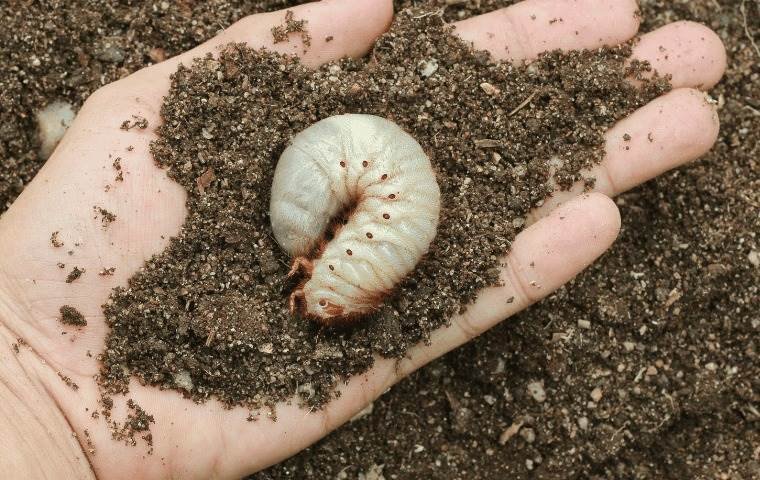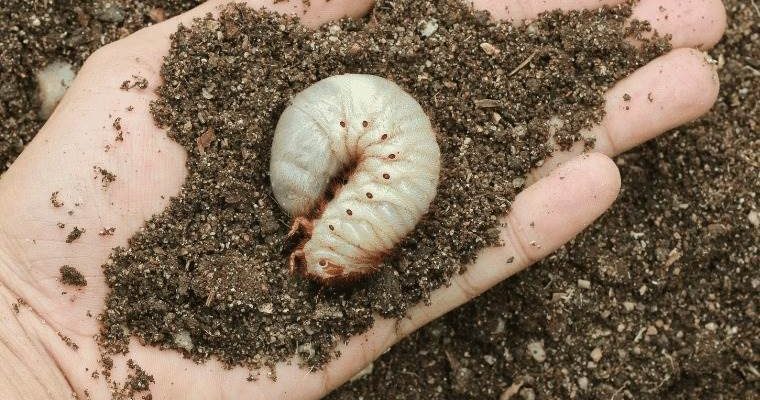
In this guide, I’ll walk you through the ins and outs of identifying grub worms in soil and turf. We’ll talk about what they look like, where to find them, and the signs they leave behind. So, if you’ve noticed some brown patches in your lawn or some plants looking a little droopy, grab your coffee, and let’s dive in.
What Are Grub Worms?
Grub worms are the larvae of various beetles, most commonly Japanese beetles, June bugs, and European chafers. They usually appear as C-shaped, white or cream-colored worms. These critters feed on plant roots in your garden and turf, which can lead to some serious damage if not addressed.
You might wonder why they’re called “grubs.” Well, think of your favorite comfort food: a warm, gooey casserole. Just like that dish might be hiding a few surprises beneath its surface, so too do grub worms hide in the soil, waiting for their moment to snack on your plants’ roots.
These pests are typically found underground, about 2 to 8 inches deep, depending on the season. In spring and summer, they tend to stay closer to the surface, making them easier to spot. The more you understand grubs, the better prepared you’ll be to protect your garden.
Identifying Grub Worms in Your Soil
The first step to identifying grub worms is knowing where to look. Check your lawn and garden, especially in areas that look unhealthy. Here are some signs that might indicate their presence:
- Brown patches: If you see areas of grass that are wilting or turning brown, grubs could be the culprit.
- Uneven turf: If your lawn feels spongy or mushy when you walk, there may be grubs munching away beneath the surface.
- Pest activity: Look for adult beetles flying around your plants in late spring or early summer. They’re the ones that laid the eggs which turned into grubs.
When digging in your soil, you can also look for the grubs themselves. To get a closer look, take a shovel and carefully dig up a small patch of grass or soil. If you find white, C-shaped worms wriggling around, congratulations—you’ve spotted some grub worms!
How to Verify Grub Presence
Now that you’ve dug up some soil and possibly spotted grubs, it’s essential to verify that they’re indeed the problematic kind. Here’s how to do that:
1. **Count the numbers:** Generally, having about 5 to 10 grubs per square foot isn’t alarming, especially if your lawn seems healthy. But if you find 15 or more, it’s time to take action.
2. **Check their color:** Healthy grubs are usually a creamy white, while grubs that are pale or yellowing might indicate distress or disease.
3. **Observe their shape:** Grubs should be C-shaped and about 1 inch long. If they look more like little worms without that characteristic curve, you might be dealing with a different type of pest.
By checking these details, you can ensure that what you’re looking at is indeed a grub—and not just another quirky garden visitor.
Signs of Grub Damage
Aside from the presence of the grubs themselves, there are several telltale signs that they’re causing trouble in your garden. Recognizing these signs can save you from costly repairs down the road.
– **Wilting Grass:** If you notice patches of grass that droop and look lifeless, it could be an indication that grubs are eating the roots. Healthy grass should stand tall and vibrant, so any droopy patches are a red flag.
– **Easy Removal of Sod:** When you pull back the grass in areas where it’s unhealthy, if it lifts away easily from the soil, that means the roots are likely being damaged by grubs.
– **Increased Presence of Animals:** If you notice more birds or animals digging in your lawn, they might be after the grubs. Birds love to snack on these hidden treats, so a surge in animal activity could be another sign of trouble.
Recognizing these signs is crucial for taking prompt action, ensuring your lawn remains the beautiful oasis you envision.
Effective Methods for Grub Control
Once you’ve identified that grubs are indeed the issue, it’s time to take action. Here are some effective methods for managing grub populations:
1. **Natural Predators:** Consider introducing beneficial nematodes into your lawn. These tiny worms seek out grubs and can help keep their populations in check. It’s like putting a bouncer at your party to keep the unwanted guests out.
2. **Chemical Treatments:** If the infestation is severe, you may want to use insecticides meant for grubs. Look for those labeled for lawn use, and follow instructions carefully.
3. **Cultural Practices:** Maintaining a healthy lawn can naturally reduce grub populations. Regularly aerating your turf, watering deeply and infrequently, and proper fertilization can promote strong grass that can withstand grub damage.
Remember, it’s always best to try the least toxic methods first. After all, we want to keep your garden safe for beneficial insects and plants too!
Preventing Future Grub Problems
Preventing grub infestations is generally easier than handling a full-blown crisis. Here are some strategies to keep those pesky grubs at bay:
- Regular Lawn Maintenance: Keep your lawn healthy by mowing regularly and following proper watering practices.
- Timing is Key: Apply treatments during late summer or early fall when grubs are most vulnerable.
- Encourage Beneficial Insects: Plant diverse flowers and plants that attract natural predators, which can help control grub numbers naturally.
Staying ahead of the game makes it easier to enjoy your garden without fear of grub invasions. After all, prevention is far less stressful than dealing with an infestation!
Identifying grub worms in soil and turf doesn’t have to be an overwhelming task. By becoming familiar with their signs and behaviors, you can protect your lawn and garden effectively. Remember to look for signs of damage, verify the presence of grubs, and act quickly to manage and prevent infestations. Whether you choose natural methods or chemical treatments, the ultimate goal is a healthy, thriving garden—one where you can sip your coffee without worrying about uninvited guests. Happy gardening!

